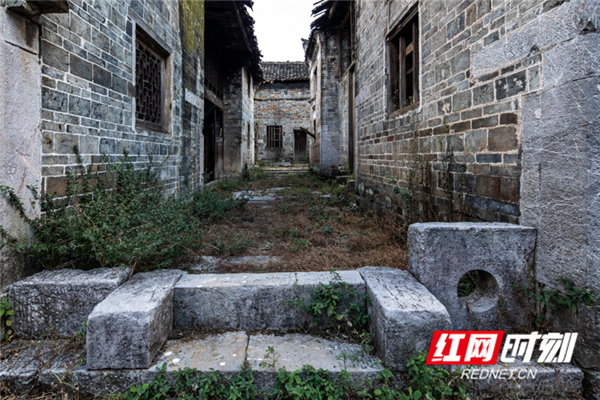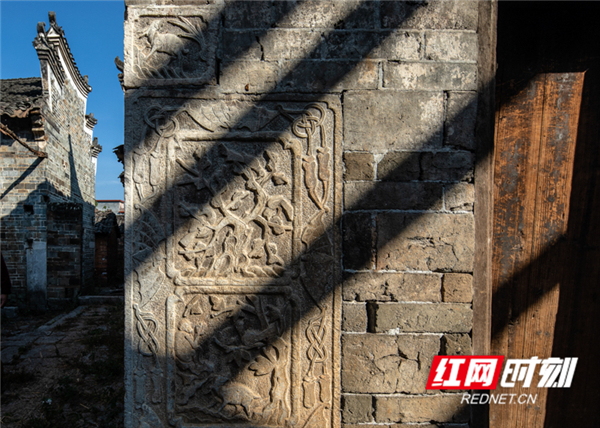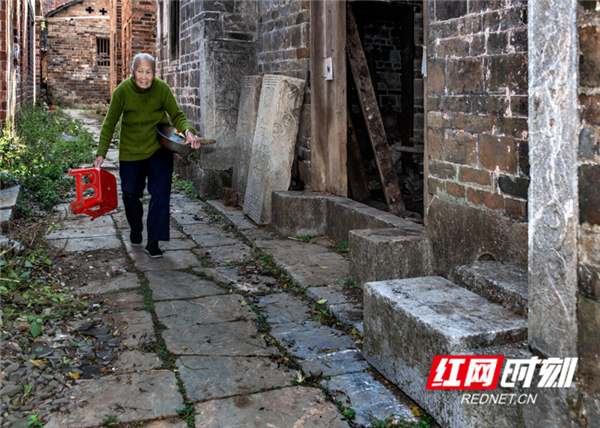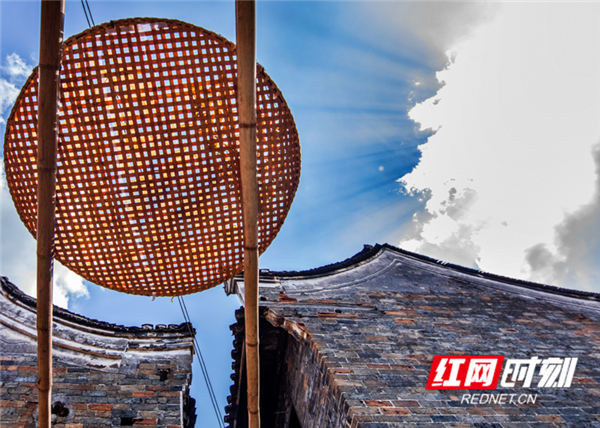Binxi Village with stone carving art
2022-11-10
As a national historical and cultural city, Yongzhou boasts a large number of ancient villages with different characteristics. Since 2012, a total of 85 ancient villages in Yongzhou have been named as “Chinese Traditional Villages” by the Ministry of Housing and Urban-Rural Development of the People’s Republic of China. Telling the changes of history, culture and nation in Yongzhou, these ancient villages have become big draws for an increasing number of people.
In the past five years, Pan Hua, a photographer form Yongzhou, has made full use of his spare time to shuttle through the land of Yongzhou, traveling about 50,000 kilometers and photographing the cultural elements of more than 400 ancient villages in Yongzhou. He has professionally collected the cultural elements like stone carvings, wood carvings, old bridges, ancient wells, towers, ancestral halls, door gods, murals, couplets, shrines, ancient roads, mansion gates, plaques, pavilions, theaters as well as the villagers’ daily life. The purpose is to salvage and record the cultural elements of ancient villages that are about to die out quickly.


Nowadays, folk hand-carved stone ornaments like long drums, jade flutes, swords, birds and beasts are gradually fading out of people’s view with the development of science, technology and social civilization. As a group of investigation enthusiasts for folk tradition and folk customs entered Binxi Village of Lanshan County, they were surprised to discover the art of ancient civilization in life.
After stepping into the ancient village, you can appreciate the ancient fashion close to life. The ancient village boasts over 10 well-preserved ancient houses with a total area of nearly 10 mu (about 6,666.67 square meters), each covering an area of 200 to 300 square meters. Stone murals and figures are carved on both sides of the front door and windowsills of each house, symbolizing good luck and harmony such as phoenixes, magpies, lions, house dogs, kylins (a kind of auspicious animal in ancient Chinese mythology), dragons, lotus seeds, long drums, jade flutes and swords. According to the appraisal given by the experts from Yongzhou Cultural Relics Management Department, Binxi Village features the ancient buildings of the Ming and Qing Dynasties, with a long history of 500 to 600 years. Many ancient houses are still inhabited by people.


At the entrance of an ancient house, a pair of stone kylins are inlaid on each side of the gate with their heads hanging upside down, signifying wealth and prosperity. The stone carvings are raised on a green stone column without any trace of splicing, standing for 1,000 years without falling down, which makes people marvel at the ancient art of stone carving. In another ancient house, there are stone carvings representing good fortune, wealth and wisdom on the left and right sides of the gate symmetrically. A pair of small stone lions are set on the corner of the gate, which are exactly in the corner of the wall on the seam. Below the lions, there is a stone carving of a woman riding a horse and holding her son on one side. There is also a mural of a man wearing an official’s cap and riding a tall horse on the other side, signifying prosperity and wealth. According to the layout of the stone carvings, the owner of the ancient house was once an official.
What is also amazing is the smooth drainage system of Binxi Village. Built on the hill, the whole village is located on the hillside, forming a natural slope from top to bottom, which is conducive to the natural drainage of rainwater. The village houses are neatly planned and connected horizontally and vertically. Drainage ditches are built in front of each house according to the foot of the wall. There are deep main drainage ditches on both sides of each lane leading to the pond at the entrance of the village, forming a smooth drainage network with “interlinked roads and drains”.


There are four well-preserved ancient wells in Binxi Village, making it easy for villagers to fetch water nearby. Each well spring is decorated with a beautiful magnetic painting with the sentence “When drinking water, one should think of its source”. Over the past 1,000 years, the village has been endowed with a galaxy of talent and a thriving population. At present, over 200 talented people have sprouted up in the village, who are engaged in various fields like education, medicine and health, engineering as well as management.


